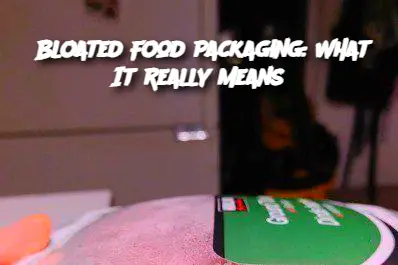ADVERTISEMENT
While bloated packaging is often harmless, it's important to recognize that not all bloating is the same. For example:
Snacks and Chips: Generally safe due to the controlled use of nitrogen.
Canned or Jarred Foods: A bloated can may indicate bacterial growth (e.g., botulism), and the product should be discarded immediately.
Vacuum-Sealed Products: Sometimes a package will bloat after being opened and resealed. This could be a sign that air has re-entered, which may compromise freshness.
Frequently Asked Questions:
Q1: Can I eat food with bloated packaging?
A1: If the packaging is bloated due to nitrogen or other non-harmful gases, the food is typically safe. However, if the bloating is accompanied by a foul odor, visible mold, or the expiration date has passed, it’s best to err on the side of caution and discard the product.
Q2: Does bloating always mean the food is spoiled?
A2: No, bloating doesn’t automatically mean the food is spoiled. Some foods, like chips and certain beverages, are intentionally packaged with a puff of gas to extend their shelf life. However, bloating in certain types of food packaging could signal bacterial contamination, especially in products like canned goods or perishable items.
Q3: What should I do if I find a bloated package?
A3: Check the expiration date and the product condition. If everything looks fine and the packaging is intact, it’s likely safe. If there are signs of leakage or the food appears damaged, it’s better to dispose of it.
In conclusion, bloated food packaging is often a sign of proper preservation but can sometimes indicate spoilage. It’s important to understand the packaging process, know what to look for, and trust your senses when deciding whether a product is safe to consume. Stay informed, and you’ll be able to navigate this common issue with confidence.
ADVERTISEMENT
